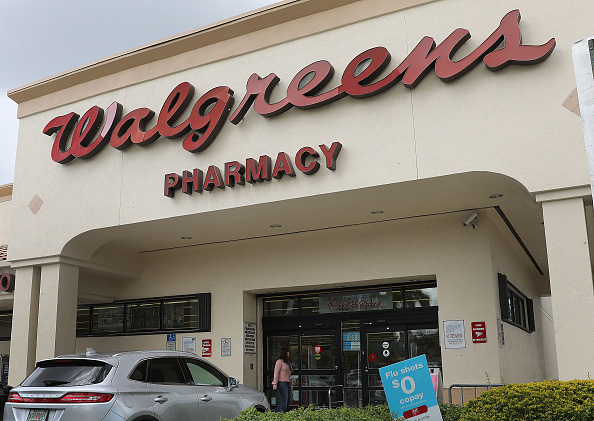
Walgreens pharmacy staff are planning to hold walkouts next week, arguing that they’re being tasked with more than what their primary jobs should entail, an organizer told MedCity News.
The main job of a pharmacist is to “safely and accurately fill prescriptions” for patients, said Shane Jerominski, an organizer of the walkouts and former Walgreens pharmacist. But in addition to this responsibility, pharmacy staff is also being bogged down with requests for administering vaccinations, testing, setting up auto-refills and other tasks. Jerominski said that when he worked at Walgreens, “working conditions were bad back then, but not as bad as they are today.” He left Walgreens to work at Target Pharmacy, which later became CVS Pharmacy. He is now working at an independent pharmacy.
Jerominski argues that there isn’t actually a pharmacist shortage. Rather, there is a “lack of pharmacists willing to put their license at risk by working in an environment where they are so overwhelmed to do their job that a medication error can happen.”
In response, organizers are encouraging pharmacy staff across the country to participate in walkouts from October 30 to November 1. Jerominski is advocating for staff to call in sick on those days so they don’t get targeted by their employer. A recent poll posted by Jerominski showed that more than 2,500 pharmacists and technicians will participate and more than 1,900 will participate if hundreds to thousands participate. He added that CVS Pharmacy staff have been in talks about joining the walkouts.
“It’s definitely not specific to Walgreens,” he said. “Any pharmacy, anywhere in the country in the retail setting that feels like their patients aren’t safe is welcome to join in this.”
If that were to happen, it would likely be a surprise to Amy Thibault, lead director of external communications at CVS Pharmacy. She told MedCity News in an email that “there’s been no unusual activity regarding unplanned pharmacy closures or pharmacist walkouts.” Thibault added that the company is “committed to providing access to consistent, safe, high-quality health care to the patients and communities we serve and are working with our pharmacists to directly address any concerns they may have.”
The upcoming Walgreens walkouts come after a September walkout in the Kansas City metro area staged by CVS pharmacists, who argued that their working conditions made it difficult for them to safely fill prescriptions.
There are two main things Jerominski would like to see from Walgreens and CVS, he noted. The first is better pay for pharmacy technicians, who he says are paid significantly less than they deserve and are being “exploited.” The second is a freezing of all non-essential duties within a pharmacy.
“If it’s not filling prescriptions and it’s not immunizing patients, they should remove all of those [duties] or at least freeze them temporarily until stores across the country are healthy to operate and then only put those back in place when they’re staffed appropriately,” Jerominski declared.
Currently, there aren’t national unions for Walgreens or CVS, but there is some unionization in some parts of the U.S. Jerominski said he hopes to see a national union in the future that’s specific to pharmacists and pharmacy technicians, though he added that it’s not easy to create.
“It’s a very difficult task, it’s a lot harder than unionizing a hospital and unionizing nurses because we have 10,000 locations of CVS across the country and 9,000 Walgreens,” he said. “Walgreens has the advantage because every pharmacist and technician kind of feels like they’re on their own island.”
He noted that advocacy efforts on behalf of pharmacists and technicians are more prominent on social media these days and that may make it easier to unionize.
In response to pharmacy staff complaints, Walgreens has been increasing its hiring and training, said Fraser Engerman, senior director of external relations at Walgreens. The company has also been improving its technology to help reduce workloads.
“We also understand the immense pressures felt across the U.S. in retail pharmacy right now,” Engerman said in an email. “We are engaged and listening to the concerns raised by some of our team members. We are committed to ensuring that our entire pharmacy team has the support and resources necessary to continue to provide the best care to our patients while taking care of their own wellbeing.”
Kevin Ban, executive vice president and global chief medical officer of Walgreens Boots Alliance, also addressed the walkouts during a recent panel discussion at Engage at HLTH. He acknowledged that there is a lot of pressure on pharmacists and said that the company has been increasing staff’s pay and is hiring more pharmacists and technicians to “lighten their load.”
He added that in the long-term, Walgreens is working to improve staff’s work life.
“How are we doing that? Through centralized services where we have people making calls for pre-authorizations and a bunch of bureaucratic administrative [things] that they should not do,” Ban said. “The next piece is that we have made a huge investment in micro fulfillment, where we have centers where we fill medications centrally so that pharmacists don’t have to. Then we push the medications back. Why? Because we’re trying to take away that stress that exists in their day-to-day.”
Photo credit: Joe Raedle, Getty Images








